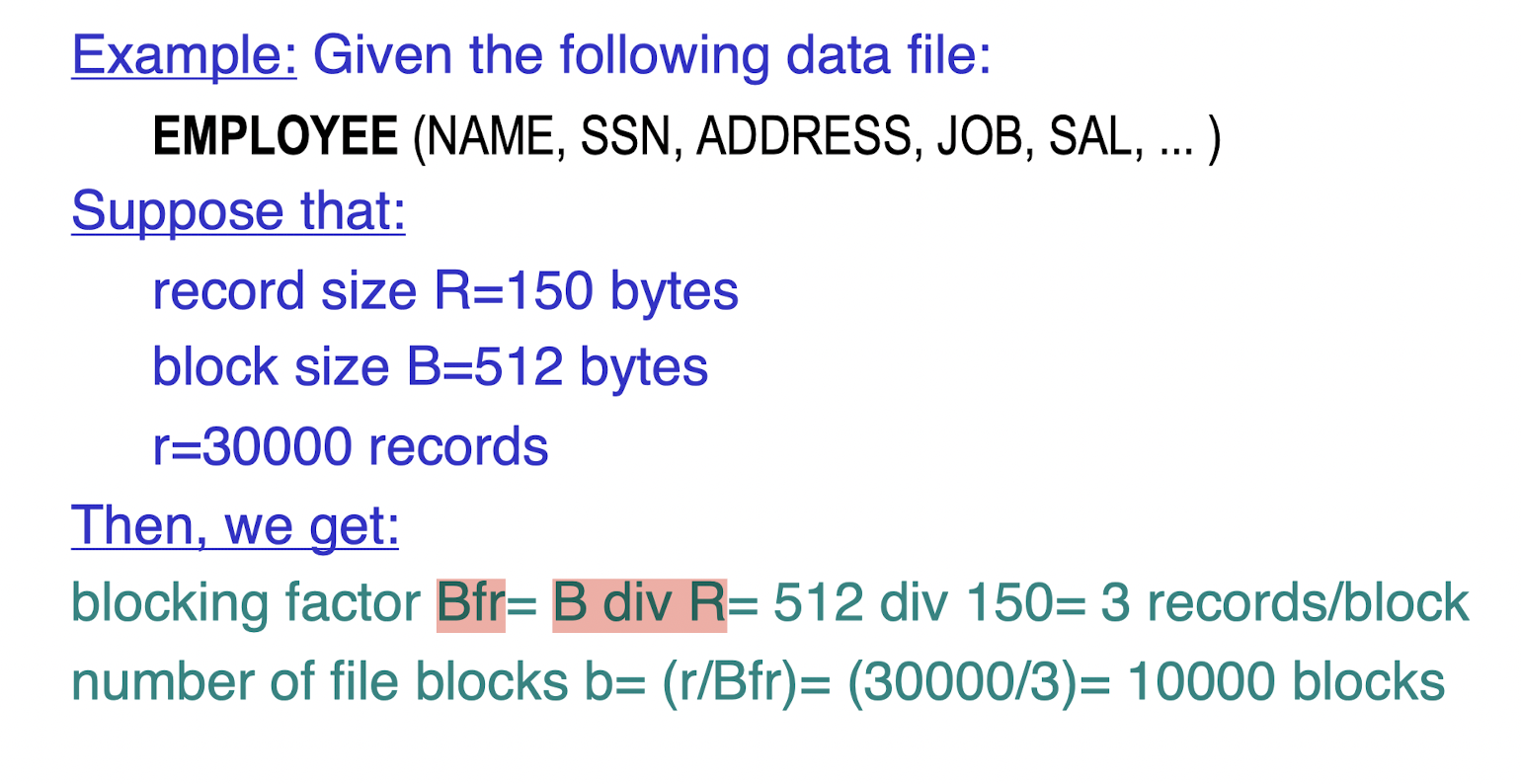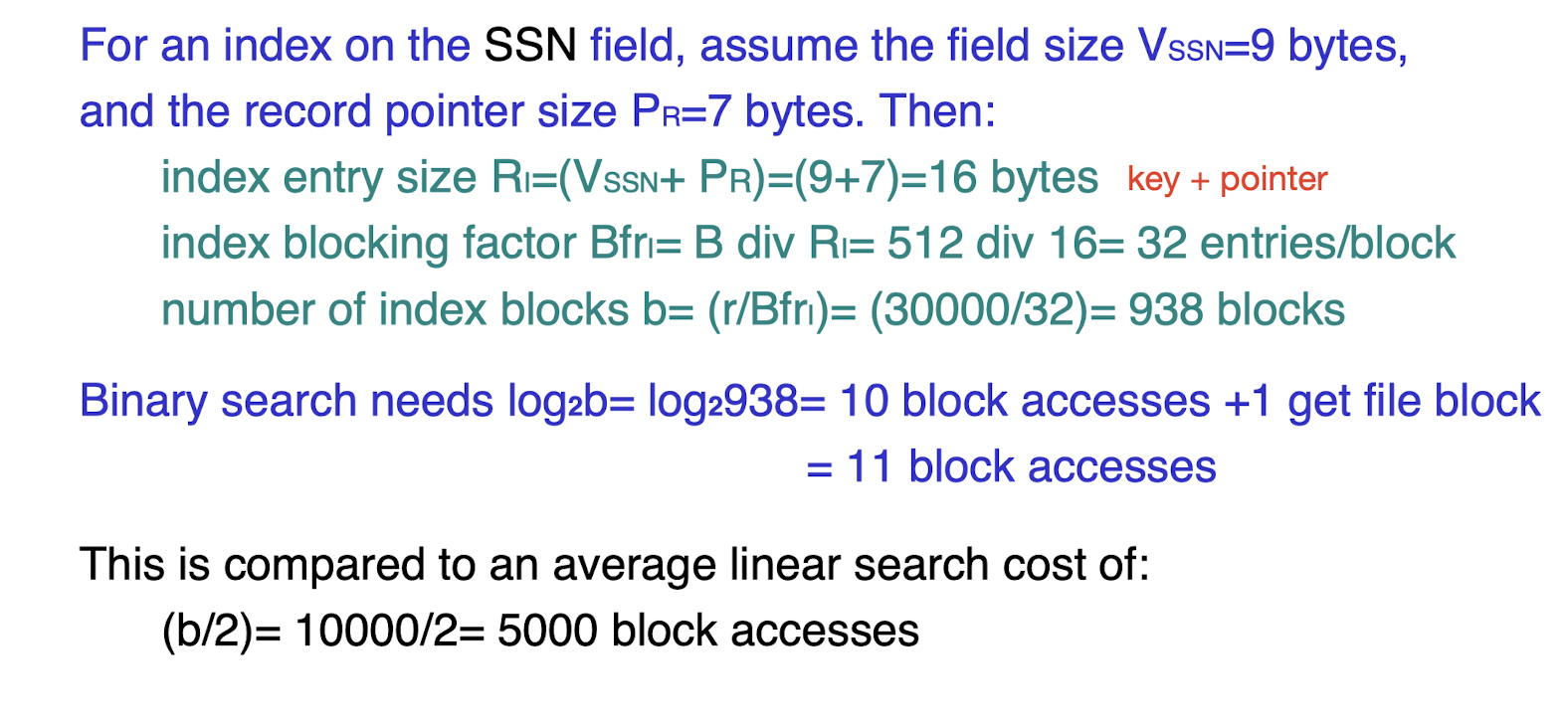Data base system - L6-7
这篇文章展示了数据库系统的学习记录
1 Disk Storage Devices
- Data stored as magnetized areas on magnetic disk surfaces.
- A disk pack contains several magnetic disks connected to a rotating spindle.
- Disks are divided into concentric circular tracks on each disk surface. Track capacities vary typically from 4 to 50 Kbytes.
- A track is divided into blocks (In some systems, there is an intermediate unit called sectors). The block size B is fixed for each system. Typical block sizes range from B=512 bytes to B=4096 bytes.
- Whole blocks are transferred between disk and main memory for processing.
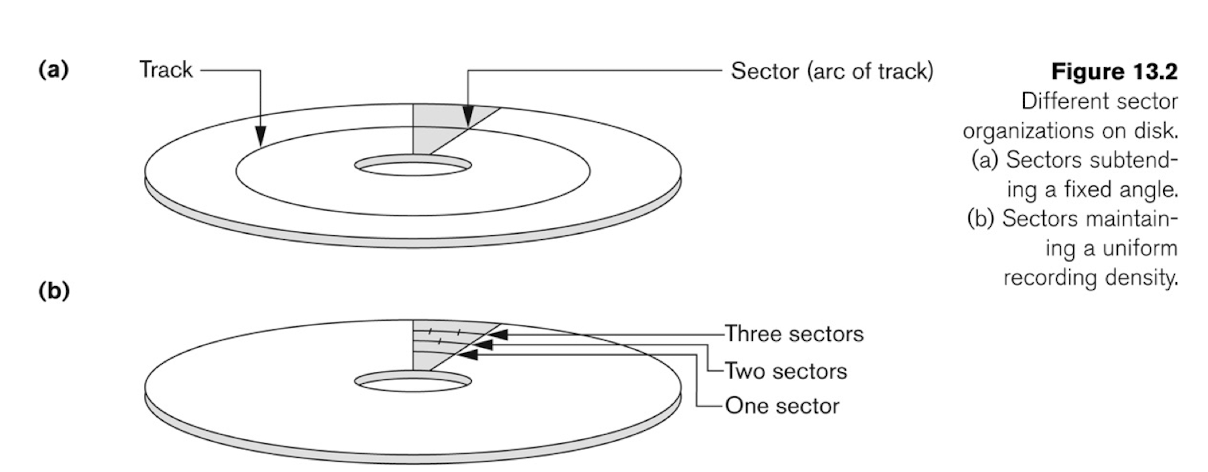
- A read-write head moves to the track that contains the block to be transferred. Disk rotation moves the block under the read-write head for reading or writing
- A physical disk block address consists of a surface number, track number (within surface), and block number (within track)
- Reading or writing a disk block is time consuming because of the seek time $s$ and rotational delay (latency) $rd$
- Double buffering can be used to speed up the transfer of contiguous disk blocks
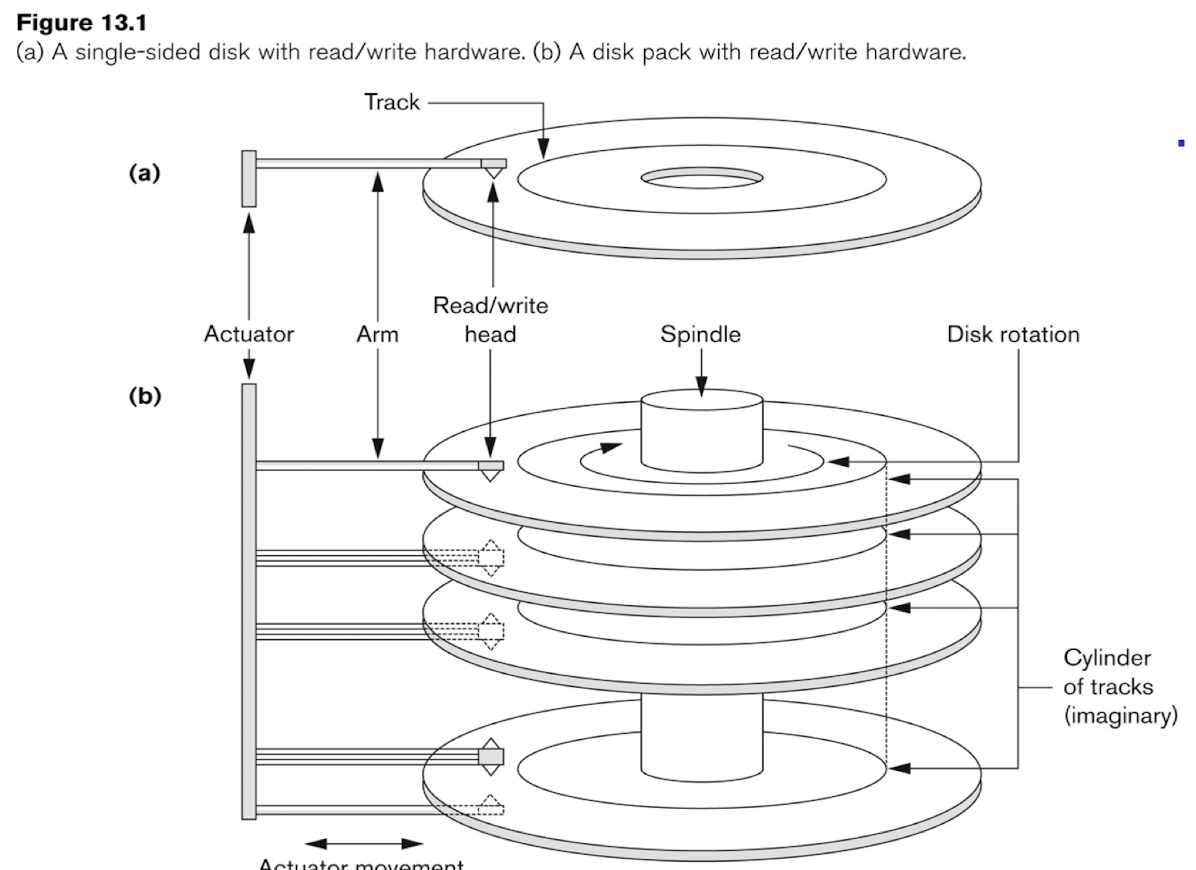
2.1 File of Records
-
A file is sequence of records, where each record is a collection of data values or items.
- A file descriptotr or header includes information that describes the file, such as the field names and their data tpyes, and the addressseds of the file blocks on the disk.
- Records are stored on disk blocks. The blocking factor bfr for a file is the (average) number of file records stored in a disk block.
- A file can have fixed-length records or variable-length records.
-
File records can be
- unspanned: no record can span two blocks
- spanned: a record can be stored in more than one block
-
In a file of fixed-length records, all records have the same format. Usually, unspanned blocking is used with such files.
-
Files of variable-length records require additional information to be stored in each record. Usually spanned blocking is used with such files.
-
The records of a file can be contiguous, linked, or indexed.
2.2 Operation on Files
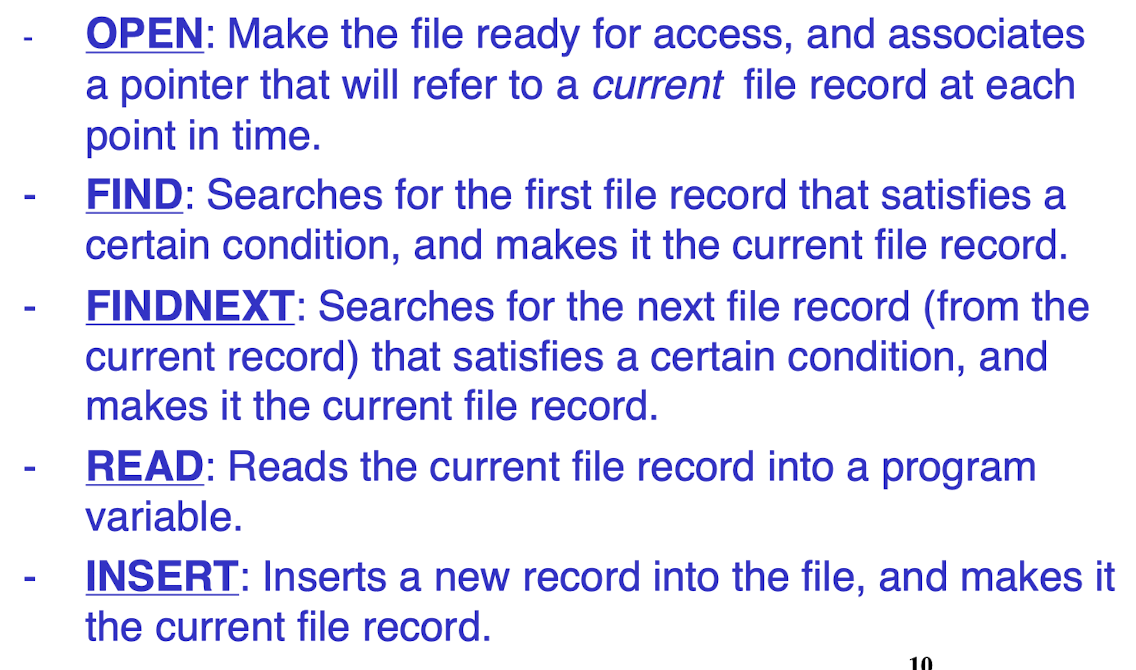
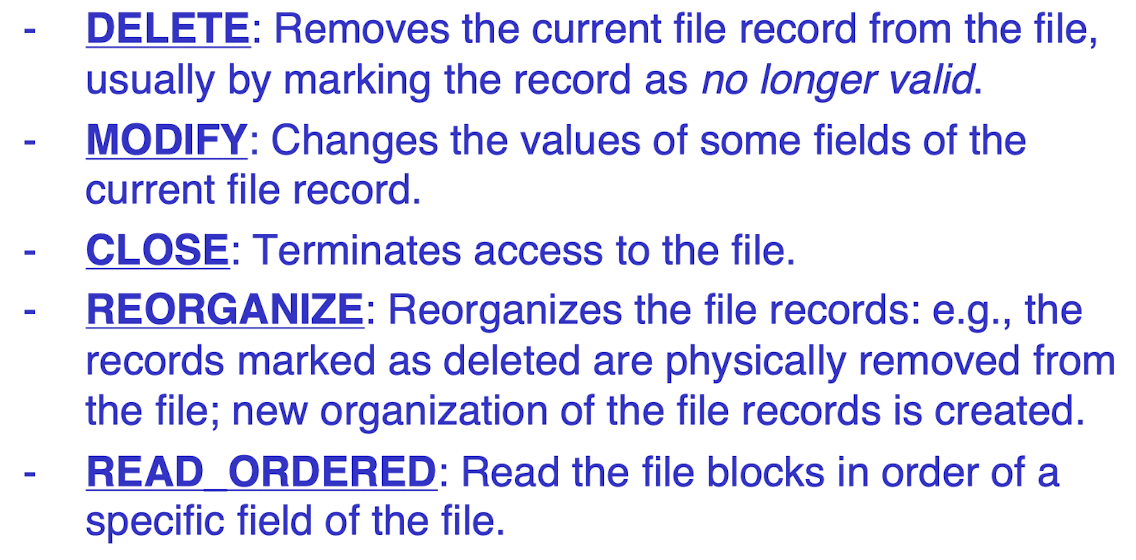
2.3 Unordered Files & ordered Files
- Unordered Files: also called pile file
- New records are insterted at the end of the file
- Linear search through the file is necessary, which requires reading and searching half the file blocks on the average. QUITE EXPENSIVE.
- Insertion is quite efficient
- Reading the records in order of a particular field requires sorting the file records.
| 9 | 16 | 50 | 2 | 10 | 4 | 8 | 12 | 60 | 100 |
|---|
- Ordered Files: also called sequential file
- File records are kept sorted by the values of an ordering field.
- Insertion is expensive: records must be inserted in the correct position. It is common to keep a separate unordered overflow file for new records to improve insertion efficiency; this is periodically merged with the main ordered file
- A binary search can be used to search for a record on its ordering field value. This requires reading and searching ${log_2}^{n}$ of the file blocks on the average.
- Reading the records according to the order of the ordering field is quite efficient.
| 2 | 4 | 6 | 14 | 18 | 50 | 100 | 5000 | 9000 | 100000 |
|---|
2.4 Hashed Files
- Hashing for disk files is called External Hashing
- Collisions occur when a new record hashes to a bucket that is
already full
- an overflow file is kept for storing such records;
- overflow records that hash to each bucket can be linked together.
[Resolution]
- Open addressing: Proceeding from the occupied position specified by the hash address, the program checks the subsequent positions in order until an unused (empty) position is found.
- Linear Prob: If collide, try Bucket_id+1, Bucket_id+2, …
- Quadratic Prob: If collide, try Bucket_id+1, Bucket_id+4,…(try to not affect the close neighbors like linear probing)
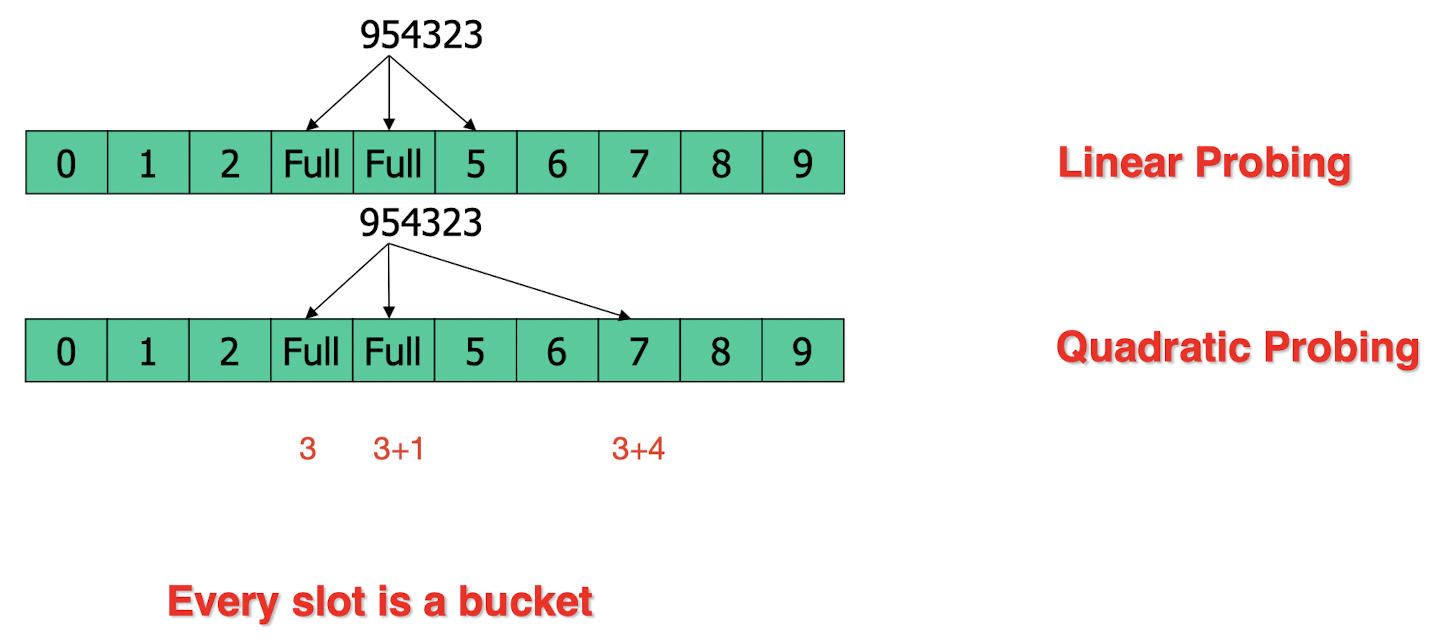
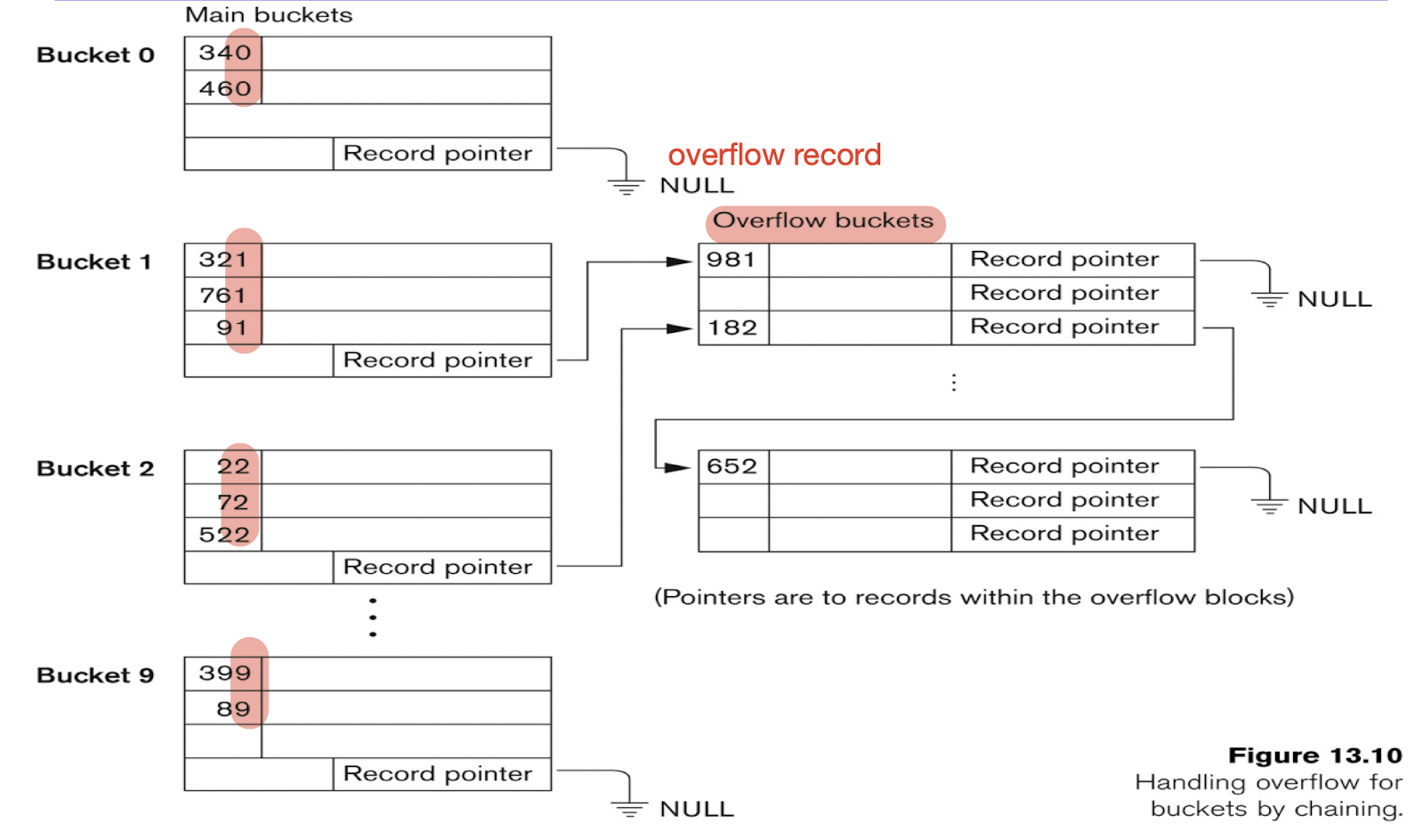
Main disadvantagesof static external hashing: Fixed number of buckets M is a problem when the number of records in the file grows or shrinks.
2.5 Dynamic and Extendible Hashing Techniques
- Both dynamic and extendible hashing use the binary representation of the hash value h(K) in order to access a directory.
- In dynamic hashing the directory is a binary tree.
- In extendible hashing the directory is an array of size $2^d$ where d is called the global depth.
- The directories can be stored on disk, and they expand or shrink dynamically.
- An insertion in a bucket that is full causes the bucket to split into two buckets and the records are redistributed among the two buckets.
- Dynamic and extendible hashing do not require an overflow area.
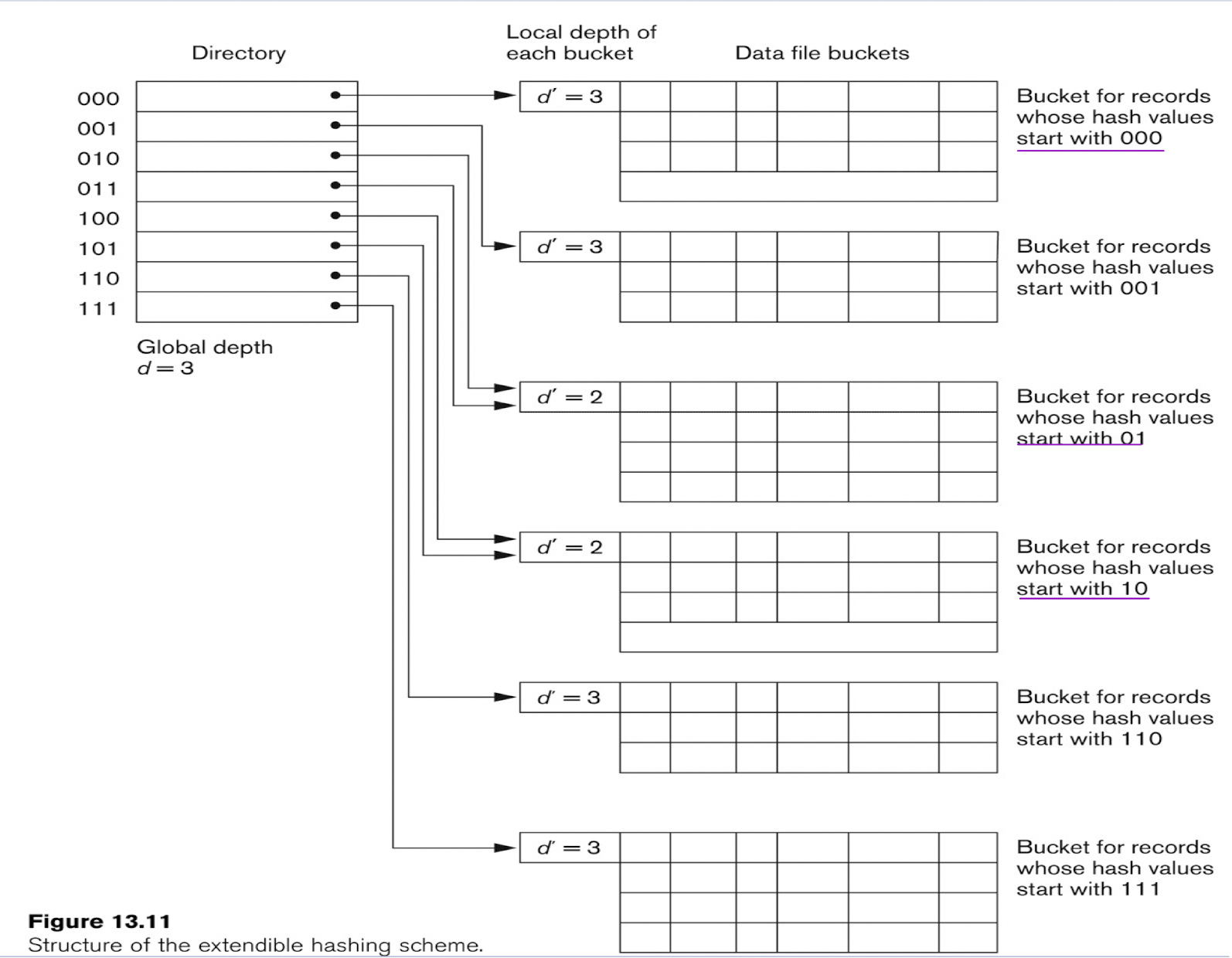
3 Types of Single-level Indexes
- One form of an index:
- a file of entries <field value, ptr to record>, which is ordered by field value
- The index is called an access path on the field


3.1 Primary Indexes
- Defined on an ordered data file
- The data file is ordered on a key field
- Includes one index entry for each block in the data file; the index entry has the key field value for the first record in the block, which is called the block anchor
- A similar scheme can use the last record in a block
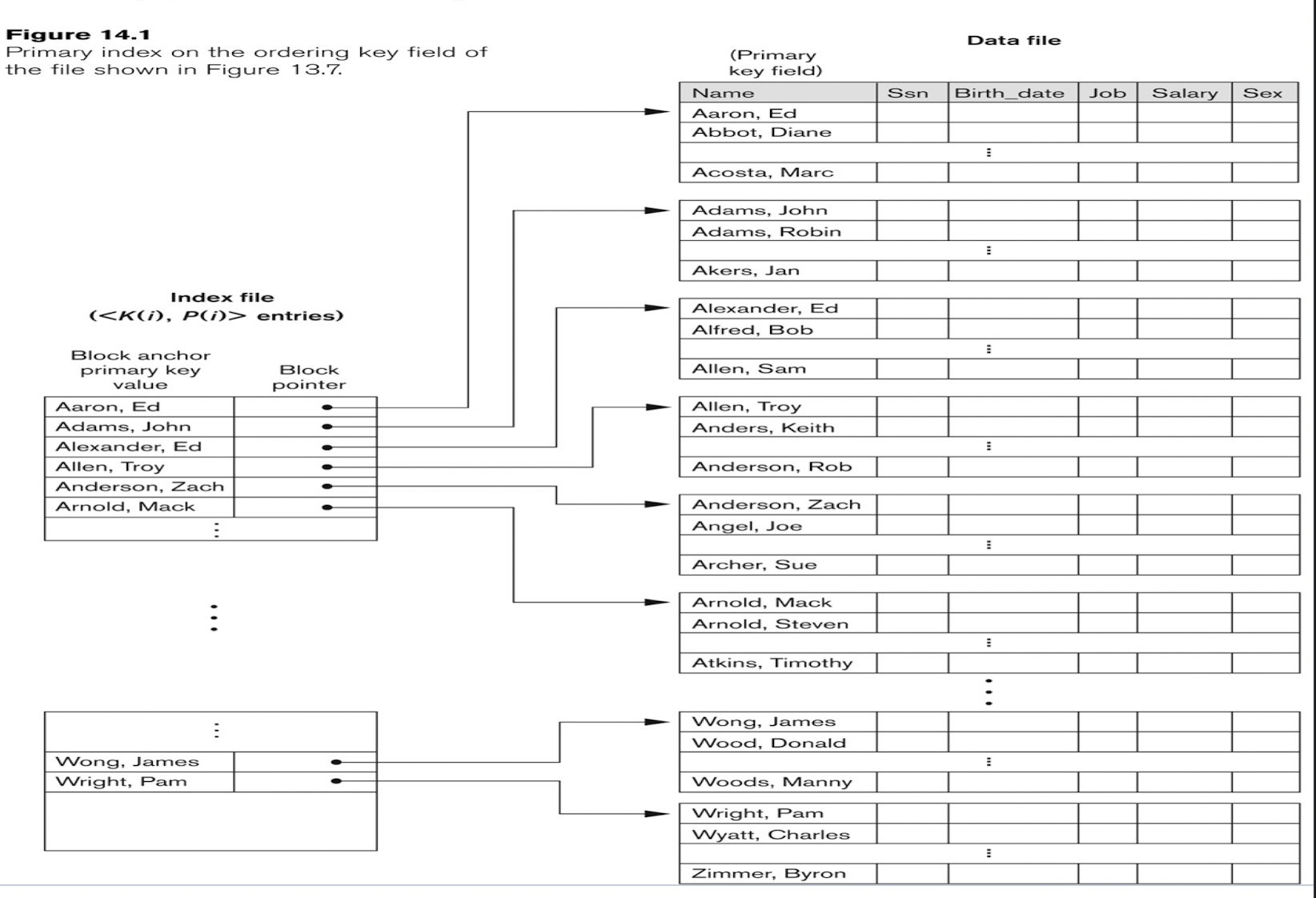
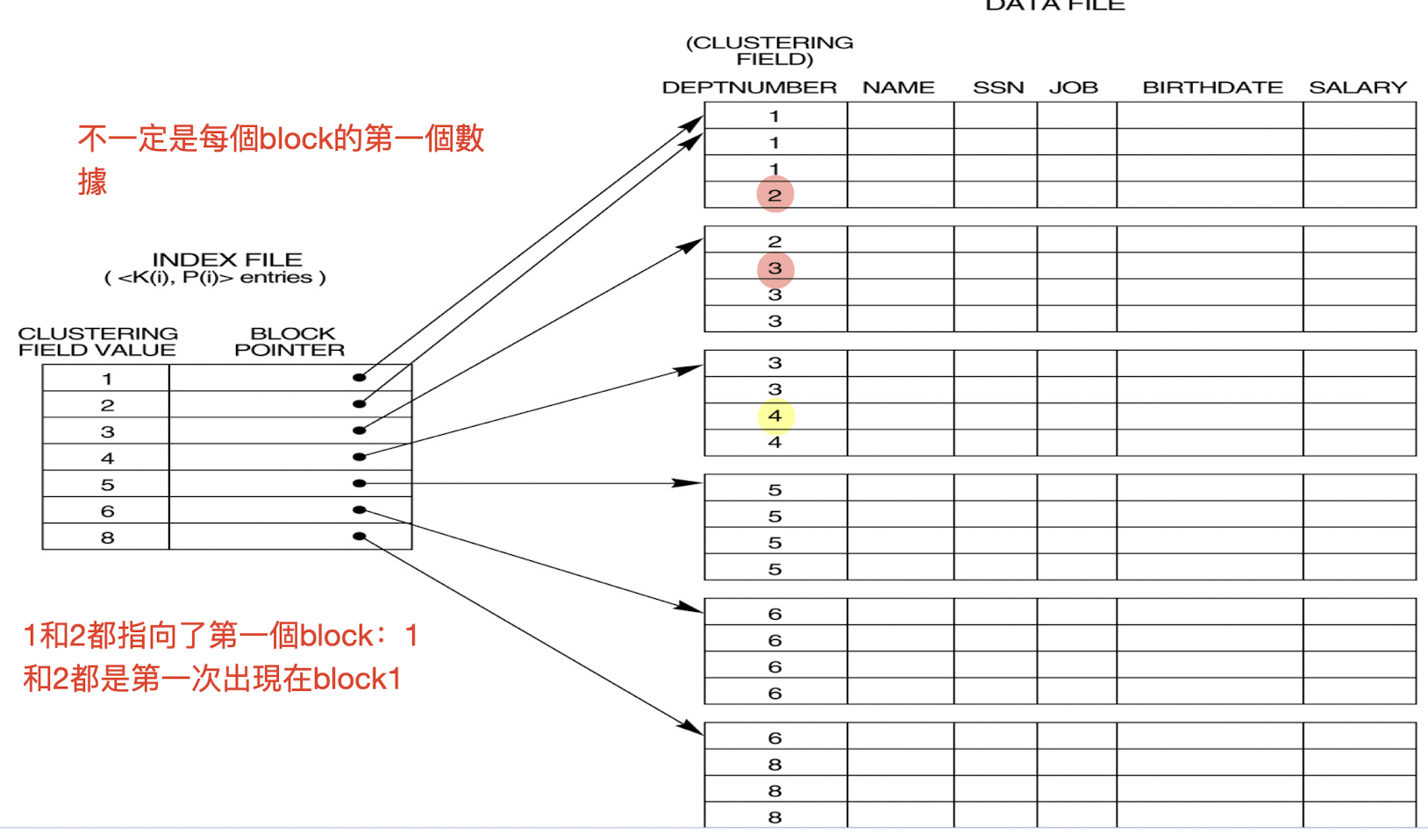
3.2 Clustering Indexes
- Defined on an ordered data file
- The data file is ordered on a non-key field
- Includes one index entry for each distinct value of the field; the index entry points to the first data block that contains records with that field value
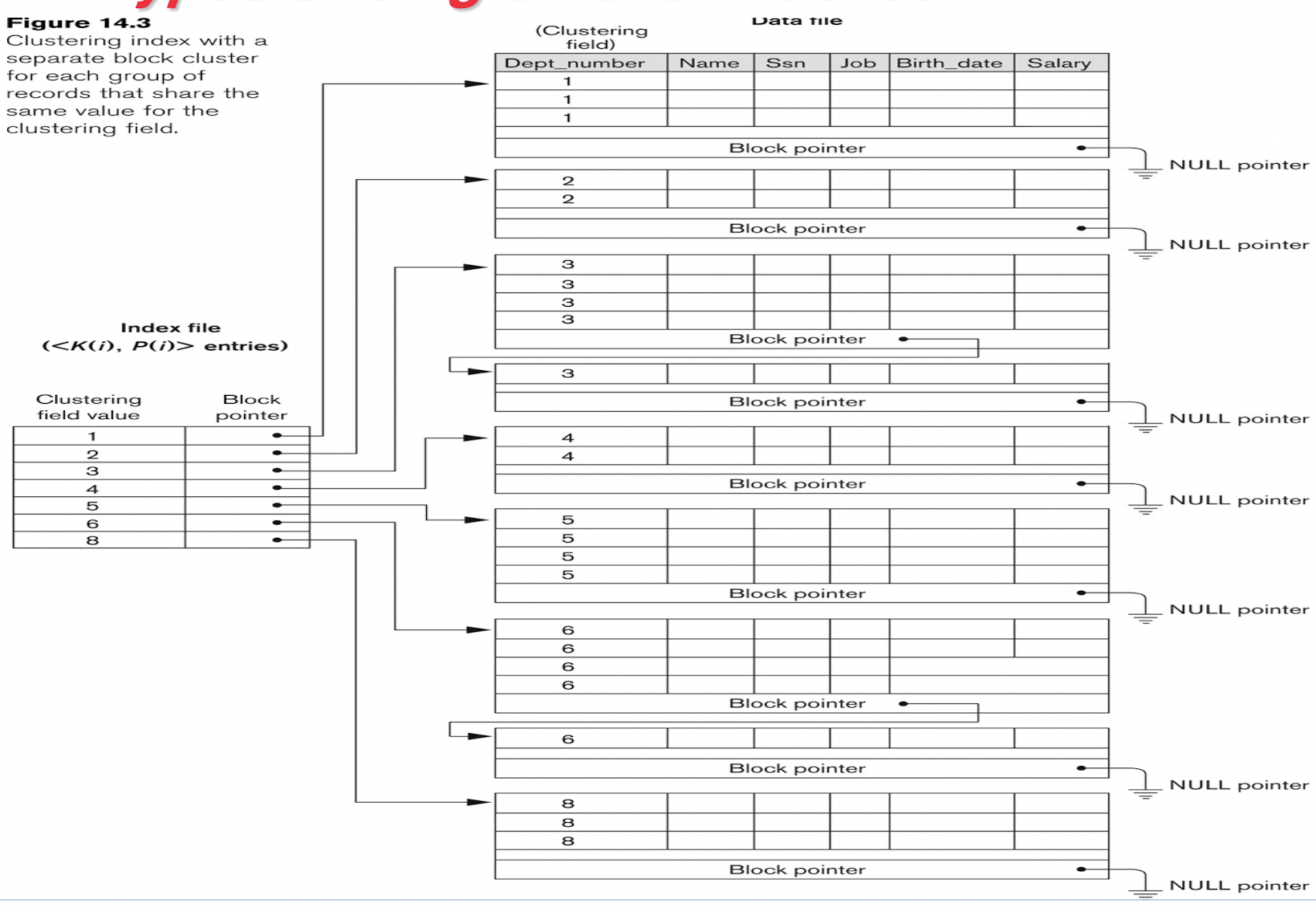
3.3 Secondary Indexes
- A secondary index provides a secondary means of accessing a file for which some primary access already exists
- The secondary index may be on a candidate key field or a non-key field
There can be many secondary indexes for the same data file.
- The index is an ordered file with two fields.
- The first field is of the same data type as some non-ordering field (ie.,the indexing field) of the data file.
- The second field is either a block pointer or a record pointer
- If we include one entry for each record in the data file, then it is called a dense index
3.4 Multi-level Indexes
- Because a single-level index is an ordered file, we can create a primary index to the index itself ; in this case, the original index file is called the first-level index and the index to the index is called the second-level index
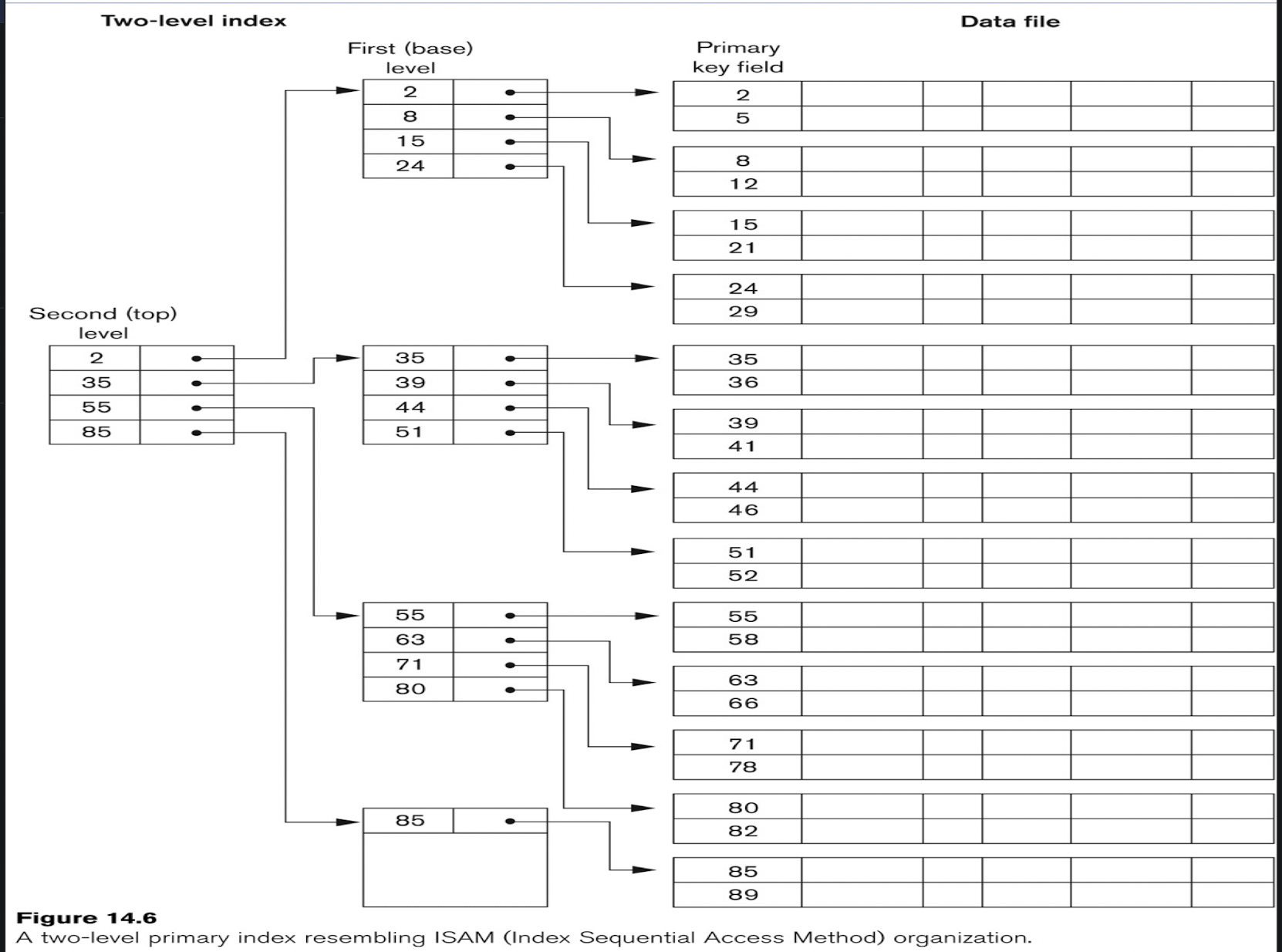
4 B-Trees and B+-Trees as Dynamic Multi-level Indexes
- In B Tree and B+ Tree data structures, each node corresponds to a disk block
- Each node is kept between half-full and completely full
[An insertion into a node that is not full is quite efficient; if a node is full the insertion causes a split into two nodes]
[If a deletion causes a node to become less than half full, it must be merged with neighboring nodes]
- In a B tree, pointers to data records exist at all levels of the tree
- In a B+ tree, all pointers to data records exists at the leaf-level nodes
- Internal pointer must point to a block
- A search tree of order $p$ is a tree such that each node contains at most $p−1$ search values and $p$ pointers
- Each internal node has at most $p$ tree pointers, $p-1$ value(s).
- Each internal node, except the root, has at least $⎡(p/2)⎤$ tree pointers, $⎡(p/2)⎤-1$ value(s). The root node has at least two tree pointers if it is an internal node.
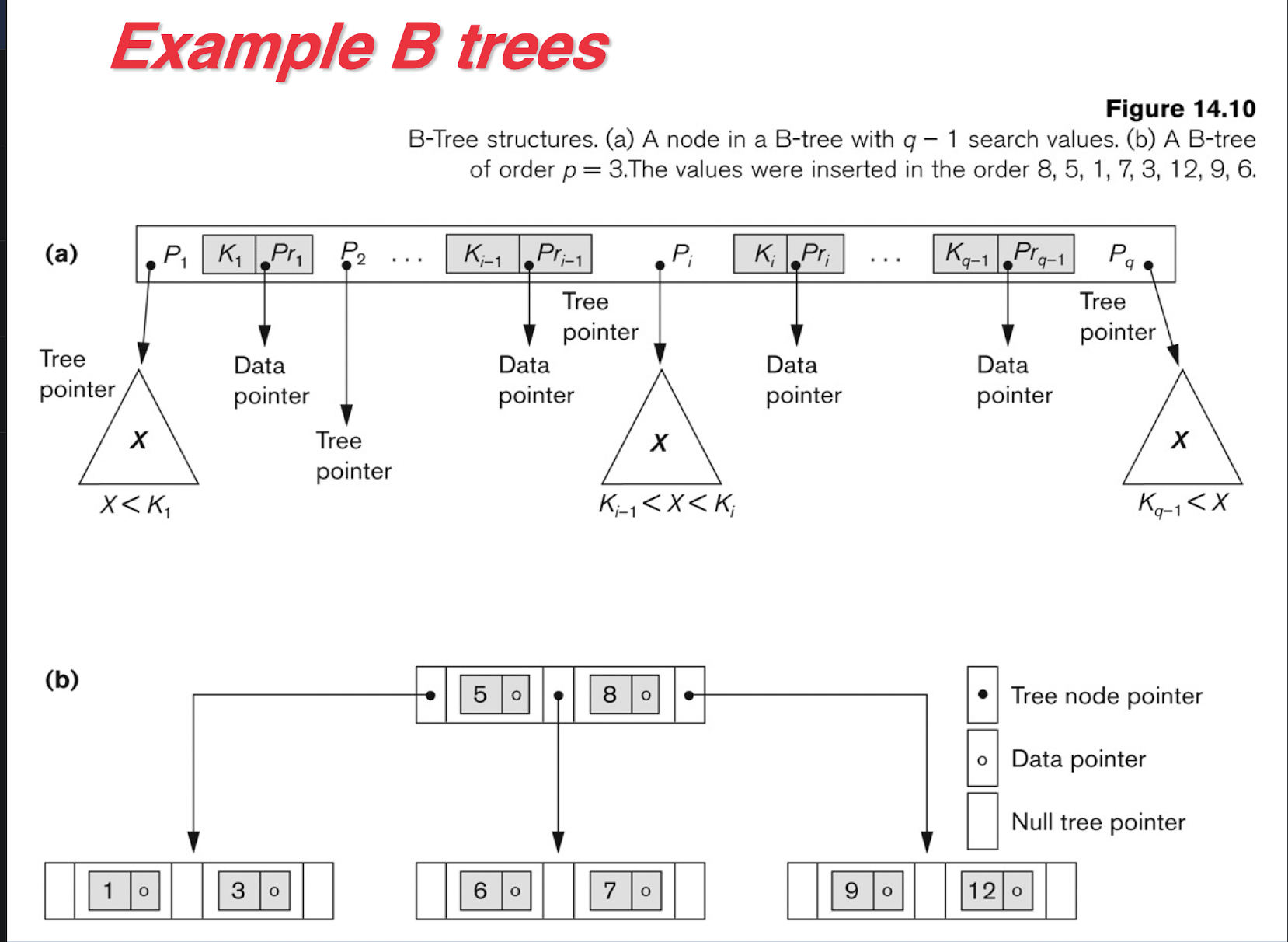
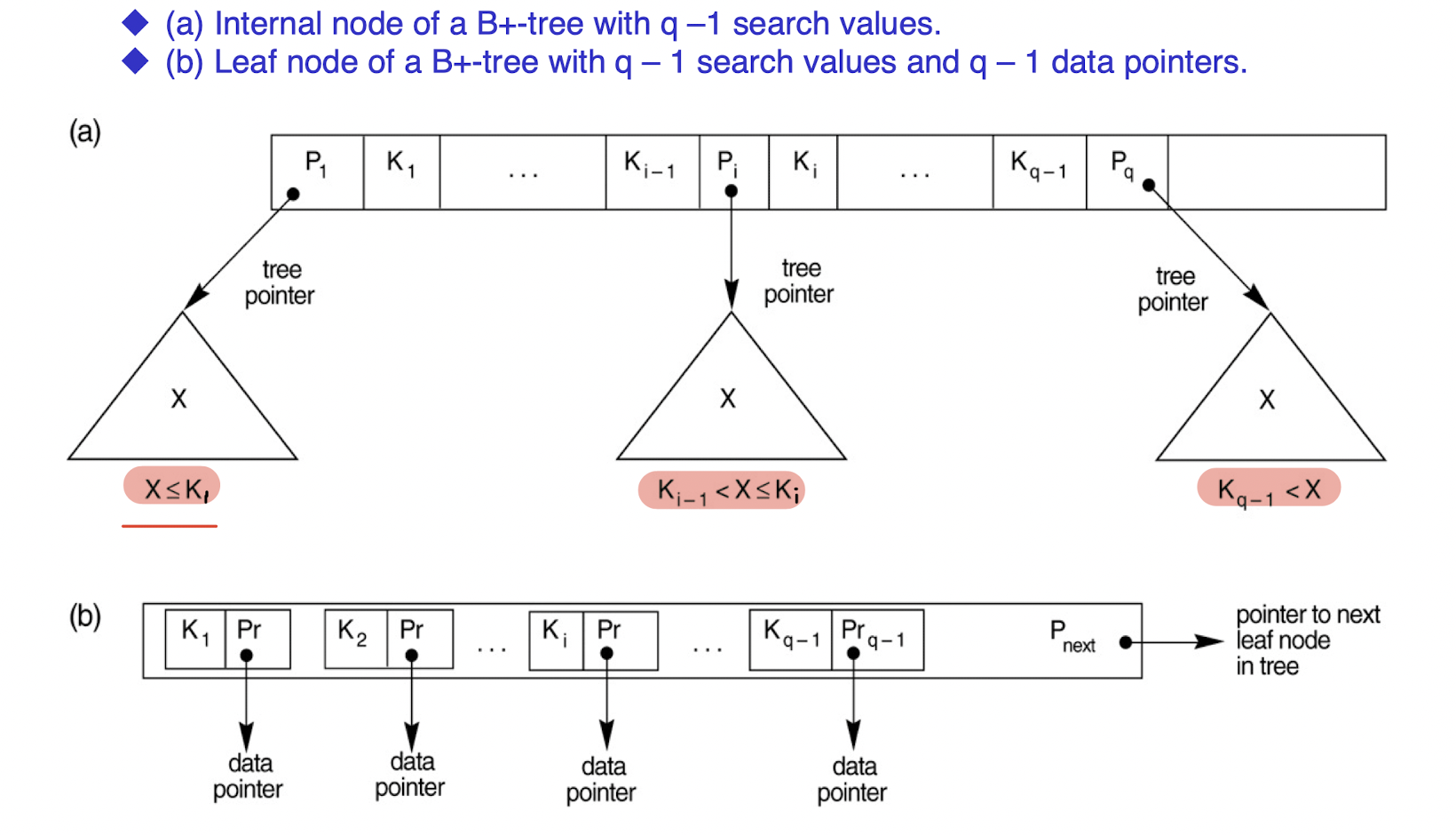
- During the insertion, the node has to be splited when it is full.
- During the deletion, the node has to be merge when it is too small (number of value < $⎡(p/2)⎤-1$). Normally, we choose the left leaf node of the same subtree to merge. (When there exists right or left leaf node within a same subtree, it should be different results.)
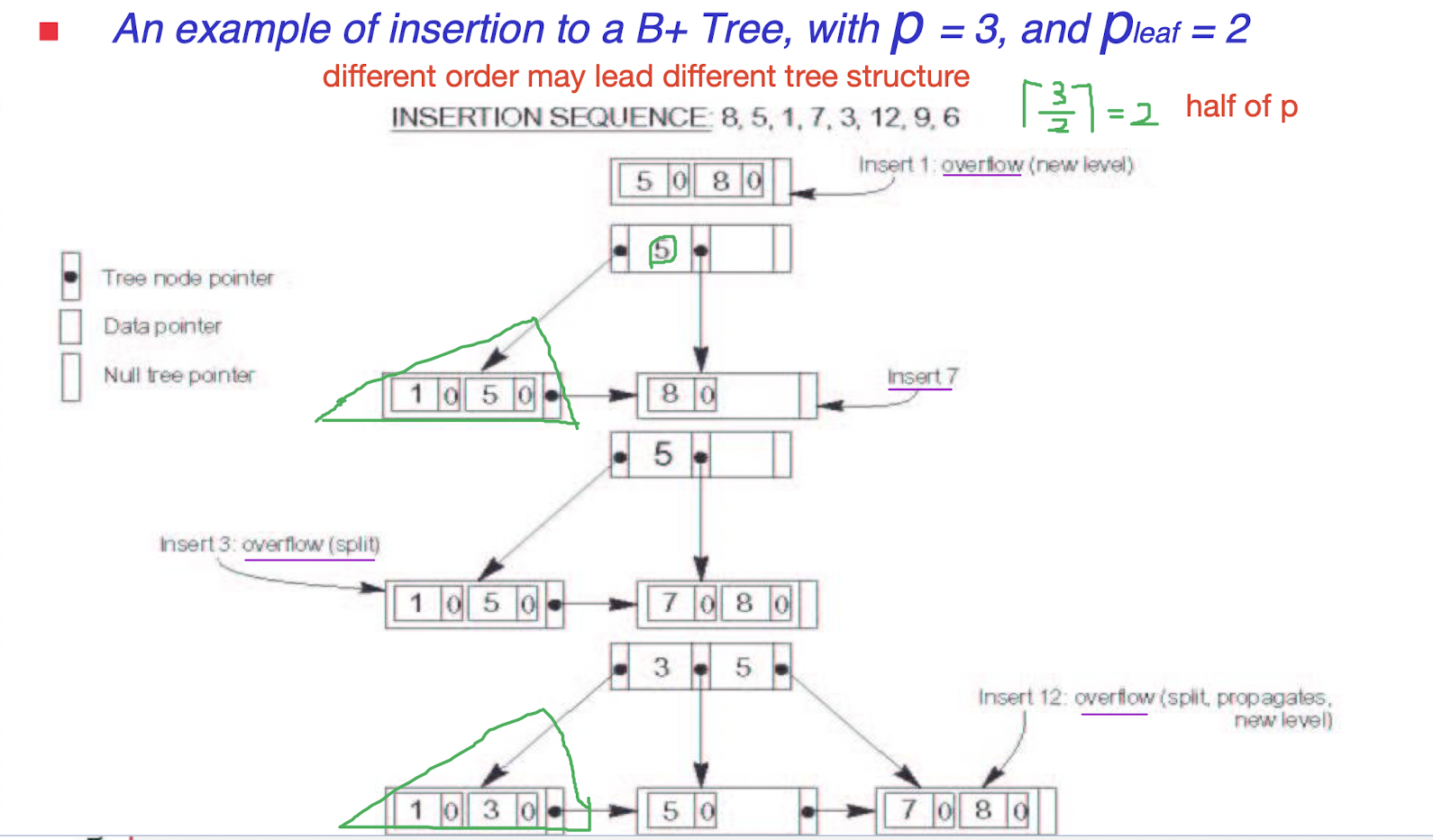
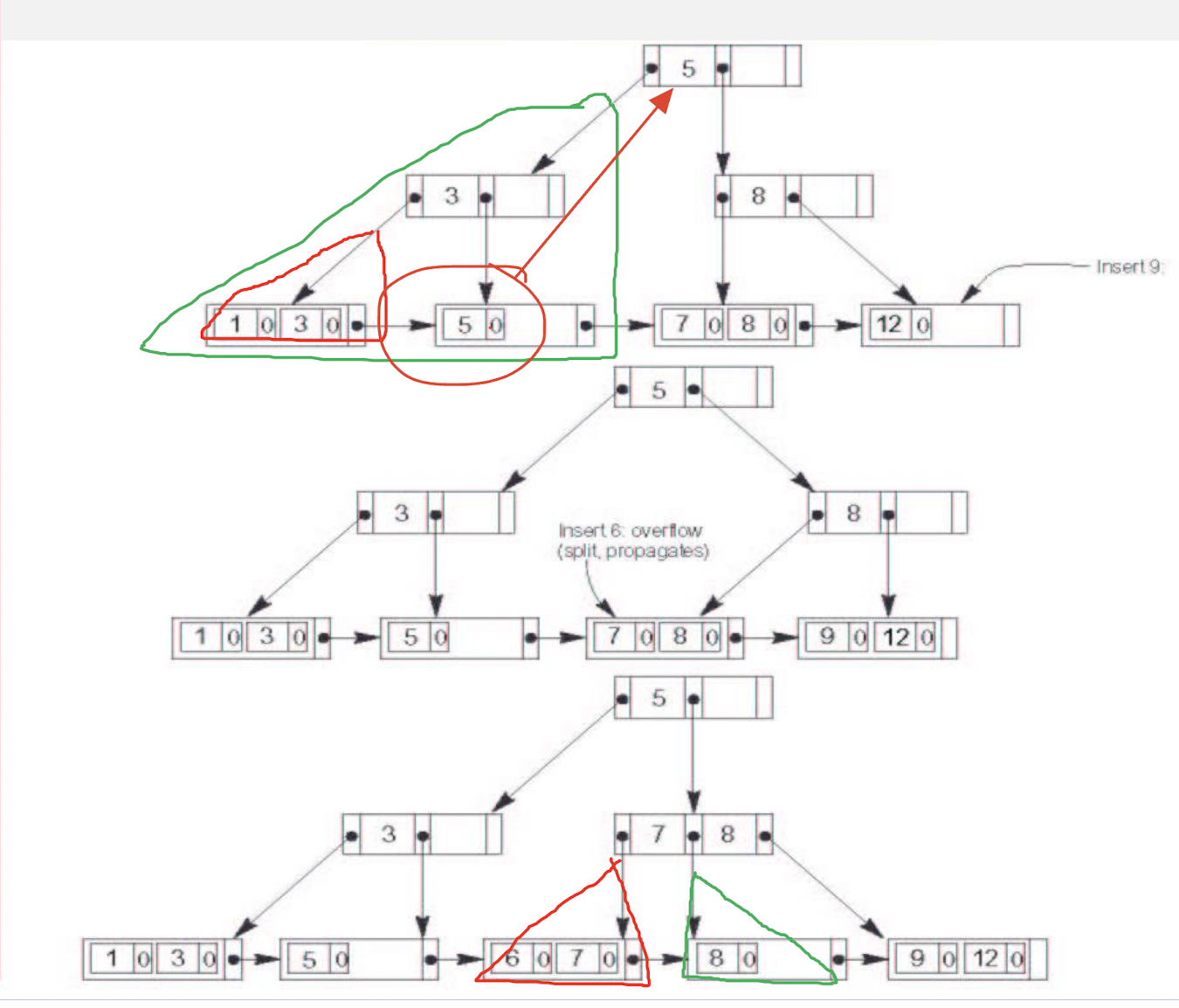
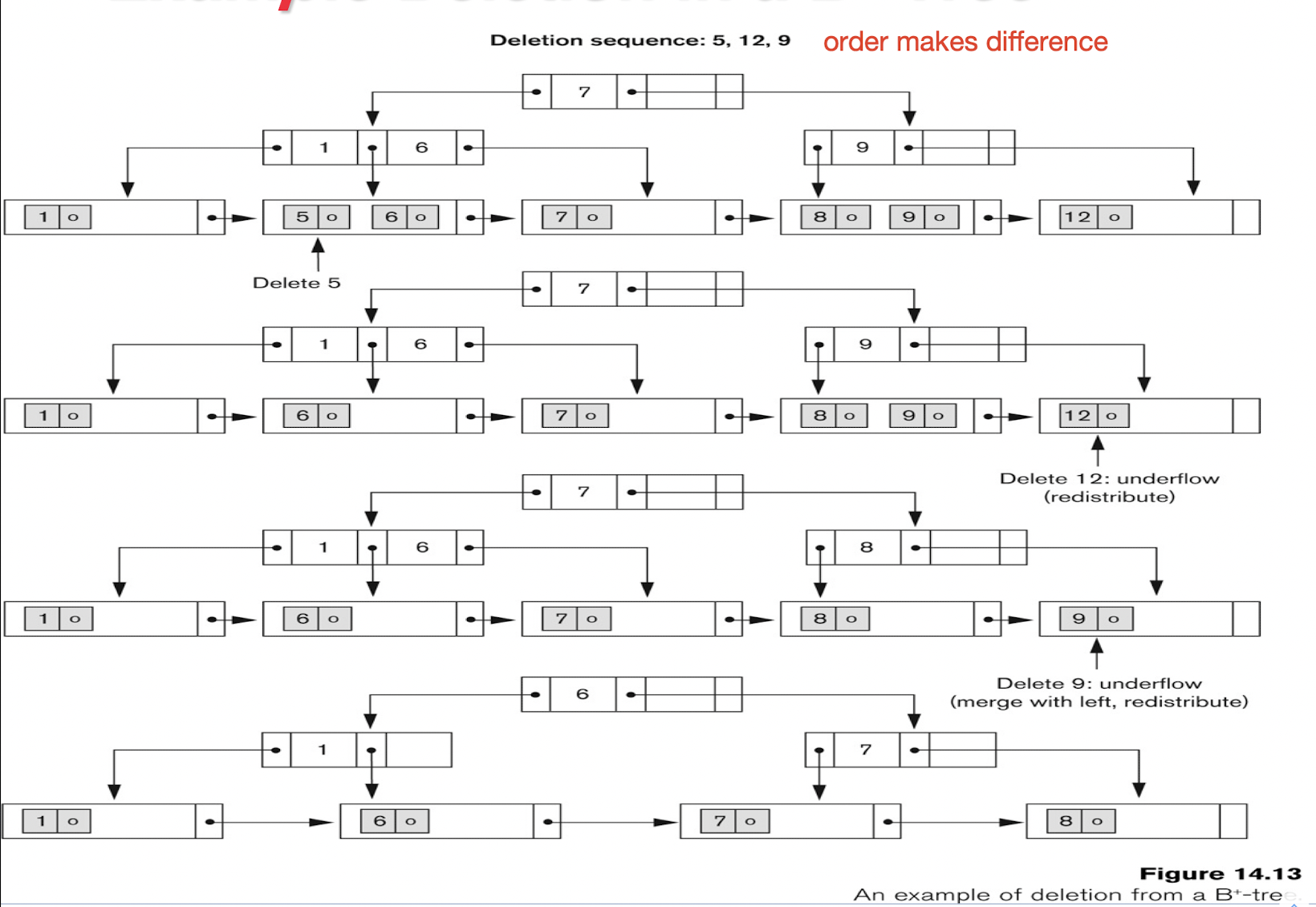
5 Physical Database Design Decisions
5.1 Physical Database Design Decisions
- Denormalization as a design decision for speeding up queries
- The goal of normalization is to separate the logically related attributes into tables to minimize redundancy and thereby avoid the update anomalies that cause an extra processing overheard to maintain consistency of the database.
- The goal of denormalizationis to improve the performance of frequently occurring queries and transactions. (Typically the designer adds to a table attributes that are needed for answering queries or producing reports so that a join with another table is avoided.)
5.2 Tuning
-
Goal:
- To make application run faster
- To lower the response time of queries/transactions
- To improve the overall throughput of transactions
-
Tuning Index
-
Tuning Queries
学习笔记,仅供参考
